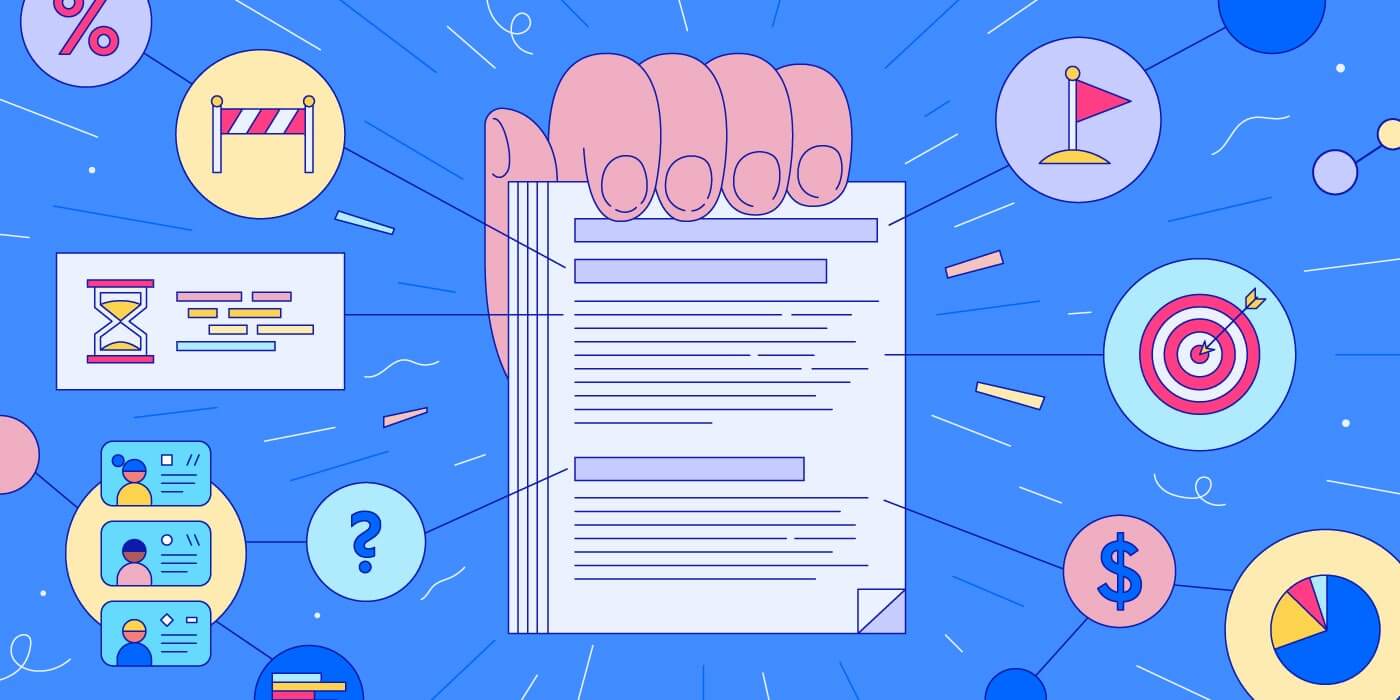An RFP (request for proposal) is an age-old exchange between a brand and a creative agency, for seemingly good reasons. Theoretically, it’s a simple process: A brand sends out an RFP to a variety of agencies to get the best ideas, then said brand chooses to work with whichever agency comes back with the winning pitch. The problem? Many brands don’t know how to write an RFP that actually helps an agency come up with the right pitch. Luckily, we’ve seen enough RFPs—good and bad—to know what to avoid, what to include, and how to make the RFP process a little more effective for everyone involved.
First: Ask Yourself if You Really Need an RFP
Before you dive into your RFP, consider whether you really do need custom creative work as part of the RFP response. You might have a specific challenge that requires proof of concept, but remember that RFPs take time, energy, and resources—both yours and the agencies. (Also, at some agencies, the teams pitching for new business aren’t going to be the same ones executing your work, so tread carefully.)
All too often, we find that the RFP process is counter to the ultimate goal: to find the right agency for you. That’s because the RFP process doesn’t accurately reflect the real-life working dynamic, wherein an agency can establish a relationship with your brand, communicate fluidly, iterate based on insights, and ultimately develop a shared project or campaign vision to execute.
Pardon the sports metaphor, but it’s a lot like baseball. A season is 162 games long, but the World Series is only 7 games. The ability to succeed over the course of 162 games requires an entirely different team dynamic—the shape of your roster, the use of bench players, and set of coaching decisions—from what’s required to succeed over only 7 games. That’s why you see some teams who are regular-season juggernauts languish in the playoffs (ahem, Dodgers), while some mediocre regular-season teams sneak into the playoffs and somehow win it all (cough cough, Giants). (No Dodgers fans were embittered in the making of this blog post. None at all.)
In short, RFPs aren’t always the most realistic representation of an agency’s work. They can often help you find the agency that is best at pitching—not necessarily the agency that would be the best partner for the work you need help with. In some cases, you may just want to ask for an agency’s case studies, methodology, or creative framework. Often, that can provide enough information for your decision. Remember: You’re trying to get a sense of how good the agency is at tackling real-life work. Past work provides the best comparison as to how your work will shape up if you engage with them.
That doesn’t mean RFPs aren’t entirely worthwhile, though. It does mean that you should be aware of their shortcomings and do what you can to close those gaps.
How to Write an RFP That Gets a Strong Response
These tips we’re sharing here should help you garner the best responses from those you invite to the process. By doing your due diligence and thoughtfully shaping the RFP, you can set both agencies (and your own brand) up for success.
1) Pre-Vet Your Agencies
You may be tempted to send an RFP to as many agencies as possible because you think you’ll get as many great pitches back. However, this isn’t the smartest approach. When it’s clear an RFP is going out to everybody, agencies may feel like they have less of a chance to win the bid, so they may put in less work. Additionally, this approach will definitely create a lot more work for you, either reducing the time you have to review each submission or the time you need to spend on other priorities. You’d certainly rather review fewer pitches that are higher quality than a ton that are pretty “meh.”
If you want better bids, do some legwork to pre-qualify agencies:
- Get referrals. Or search agencies whose work you admire.
- Look for agencies that specialize in your industry. You can benefit from their insider knowledge.
- Review their body of work. Are they versatile? Have they done the type of work you’re looking for? Can they tell a good story across different channels?
(You can also follow our guide to find and vet creative agencies if you’re on the hunt.)
Remember that every creative agency is made of humans, and humans are more motivated when they feel their work is valuable. An agency that feels they’ve been hand-picked (and therefore knows they have a better chance of winning the business) is more likely to reciprocate that effort and deliver dazzling ideas.
2) Speak in Plain English
RFPs are essentially creative briefs, helping people understand your challenge so they can generate ideas for solving it—emphasis on the word understand. Unfortunately, many RFPs start with a wall of legalese that takes a while to slog through. In other instances, the RFP is written in such stiff and formal language it’s tough to decipher exactly what it is you want. Basically, don’t bury the lede. Clearly explain what you’re looking for and what you need upfront.
Also, keep in mind that you’re writing to be understood, and that your recipients are likely to have no previous context with your industry or your brand.
(To make things easier for yourself, check out these helpful tips on how to write a great creative brief.)
3) Be Open to Questions
Often brands will toss an RFP over the fence and just wait for a final submission. It’s a one-way street. This is understandable, but it’s not totally conducive to a creative partnership, which is what you want from your creative agency.
When there is no opportunity to follow up, ask questions, or have a genuine conversation about your brand’s challenges, it’s hard for agencies to provide the strongest solution. This is especially problematic when the ask is unclear. (See above.)
Additionally, you may have already spent a bunch of time and energy on your problem, so it’s natural to think you know the solution. But aren’t you sort of hoping that the creative agency you hire can take that to the next level? Also, an agency may have a game-changing idea to rethink your situation entirely (more on this below). Let them peek behind the curtain and the results might just surprise you.
To set your bidders up for success, provide the RFP and designate a point person who will be responsive to questions. Whether it’s a quick email, call, or face-to-face interaction, that clarity will always yield better results.
4) Give Agencies Enough Time
One of our core mantras when it comes to ideation is that your first idea is rarely your best idea. However, when you don’t have much time to ideate, that’s often all you can provide. Working backward from delivering the final proposal, there are many tasks involved with developing an RFP response that don’t involve creative ideation. In addition to selecting ideas, you’re building the deck, adding images, developing a pricing model, refining case studies—the list goes on.
One of the biggest problems with RFPs is the tight turnaround, because the shorter the timeline, the more compressed the time for actually generating the thinking: the strategy, the ideas, the visuals, etc.
Not every creative agency has a dedicated new business team on hand to ideate for these. (In fact, many agencies bake the cost of their RFP work into their billable rate, effectively charging their paying clients for their own pitching efforts. Yikes.) So don’t unduly reward the ones who do, since the new business team is probably not going to work with you in the long term anyway. it’s important to provide a decent amount of time—at least two weeks, ideally—for agencies to understand your problem, discuss it with you, ideate around it, prepare a clear presentation, and deliver it.
5) Let the Creative Agency Pitch the Solution
You are sending an RFP out for a reason. It’s because you know you have a problem that needs a solution. However, sometimes a brand sends out an RFP while already assuming that they know the best solution. Unsurprisingly, they shoot down every idea pitched and end up disappointed that they couldn’t find “the one.”
It’s OK to pass on something that doesn’t feel like the right fit. But if you feel like you have a better idea, consider whether you’re looking for someone to execute your idea or someone to help you find the best idea. If it’s the former, don’t make people do extra work just “in case.”
Remember: The RFP Is Just the Beginning
Ideally, the agency you choose will become a long-term partner to help you tell your brand story in fresh and creative ways. But building that type of relationship doesn’t happen overnight. Luckily, that’s another thing that you can be proactive about.
To kick things off the right way from day one:
- Ask the right questions before you start your project together.
- Find out how to build a great working relationship with your creative agency.
- Decide how you’ll split the workload with your agency upfront.
Of course, we’d be happy to help you navigate your brand story together. If you’re looking for a partner, holler at us.




